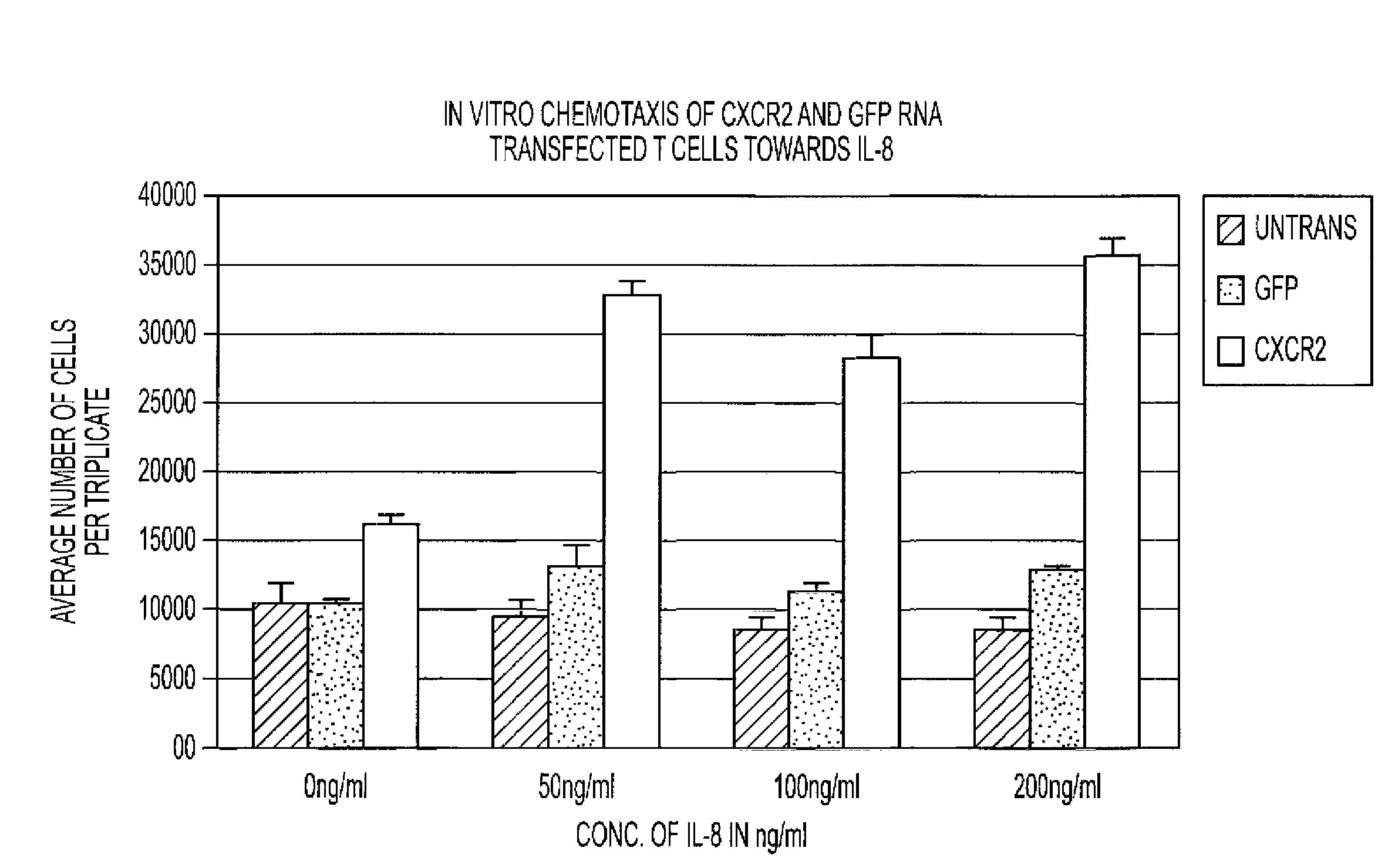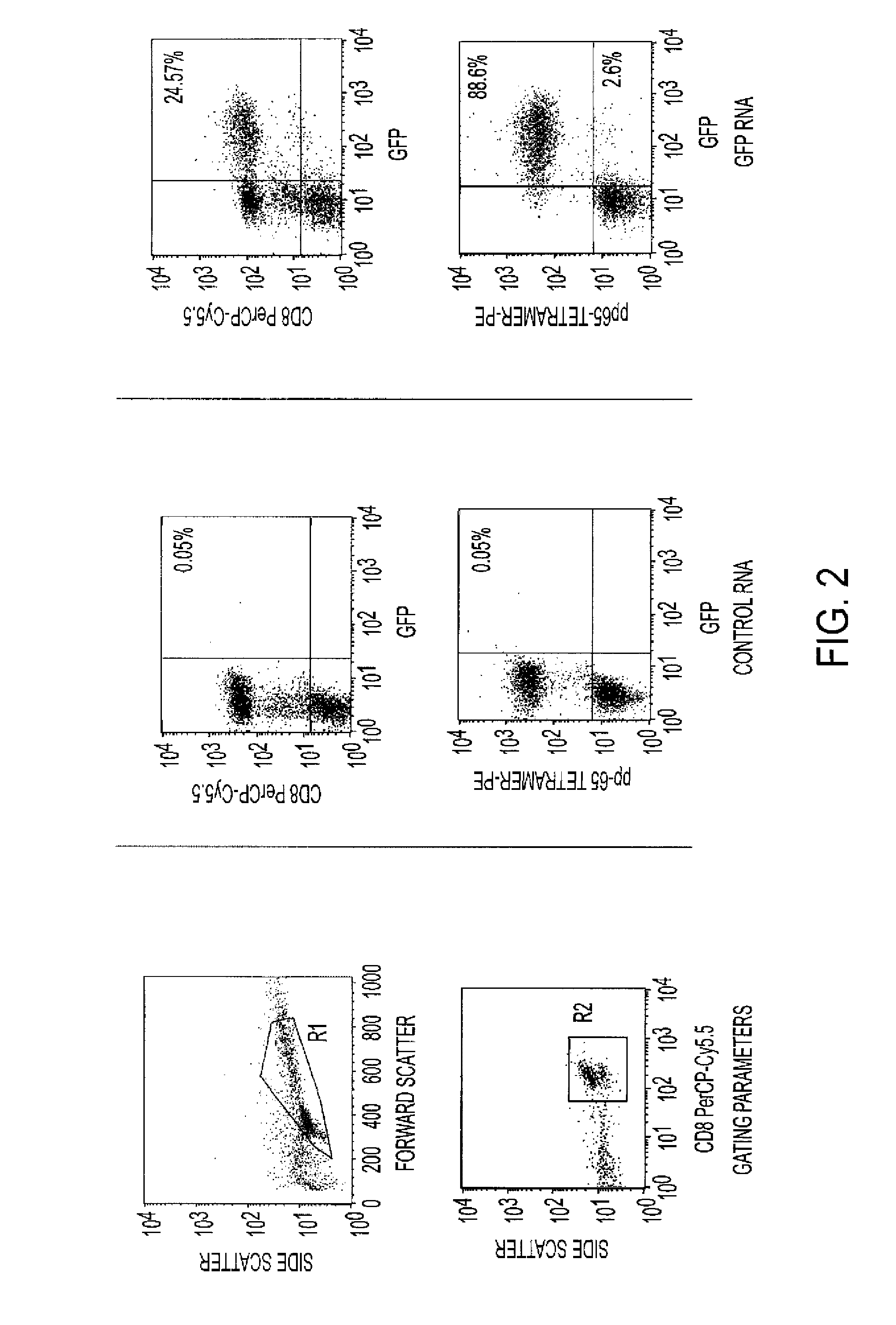Selection of antigen-specific t cells
a technology of t cells and antigens, applied in the field of immunotherapy, can solve the problems of major cognitive and motor deficits, poor prognosis of high-grade lesions, etc., and achieve the effect of altering cellular behavior
- Summary
- Abstract
- Description
- Claims
- Application Information
AI Technical Summary
Benefits of technology
Problems solved by technology
Method used
Image
Examples
example 1
Selection of Antigen-Specific T Cells Using RNA Transfection of Marker Genes
[0024]The enrichment of antigen-specific T cells for use in adoptive immunotherapy is of considerable interest in order to increase the efficacy of the delivered population of cells. We hypothesized that the requirement of T cell activation for efficient expression of genes after messenger ribonucleic acid (mRNA) transfection could be leveraged to identify and enrich antigen-specific T cells responding to antigen-pulsed dendritic cells (DCs). We utilized mRNA encoding for green fluorescent protein (GFP) as a marker gene for evaluating the ability to target antigen-specific T cells using mRNA transfection.
[0025]Human T cells from HLA-A2+ donors were stimulated with autologous DCs pulsed with a CMV-specific, pp 65 peptide, or transfected with mRNA encoding for full-length pp 65. Stimulated T cells were electroporated with mRNA encoding for GFP and expression of GFP in antigen-specific and non-specific T cell p...
example 2
RNA-Modified T cells for Use in Adoptive Immunotherapy
[0028]We have examined messenger ribonucleic acid (mRNA) transfection as a novel platform for transiently modifying the function of T cells for use in adoptive immunotherapy. We evaluated the expression of the chemokine receptor, CXCR2, in activated T cells in its capacity to enhance migration of T cells toward chemokines produced by malignant gliomas such as IL-8 and GRO-α, and towards a human cytomegalovirus (HCMV) specific chemokine, UL146, which is secreted from CMV-infected cells.
[0029]cDNA for CXCR2 and green fluorescent protein (GFP) was cloned into a RNA-expression vector and mRNA synthesized using in vitro transcription. mRNA was introduced into activated human T cells (stimulated with anti-CD3 coated plates or antigen-pulsed dendritic cells) using electroporation. Expression of CXCR2 and / or GFP was examined using flow cytometry and chemotaxis toward CXCR2-specific ligands was measured using trans-well migration assays.
[...
PUM
| Property | Measurement | Unit |
|---|---|---|
| Fraction | aaaaa | aaaaa |
| Fraction | aaaaa | aaaaa |
| Fraction | aaaaa | aaaaa |
Abstract
Description
Claims
Application Information
 Login to View More
Login to View More - R&D
- Intellectual Property
- Life Sciences
- Materials
- Tech Scout
- Unparalleled Data Quality
- Higher Quality Content
- 60% Fewer Hallucinations
Browse by: Latest US Patents, China's latest patents, Technical Efficacy Thesaurus, Application Domain, Technology Topic, Popular Technical Reports.
© 2025 PatSnap. All rights reserved.Legal|Privacy policy|Modern Slavery Act Transparency Statement|Sitemap|About US| Contact US: help@patsnap.com



